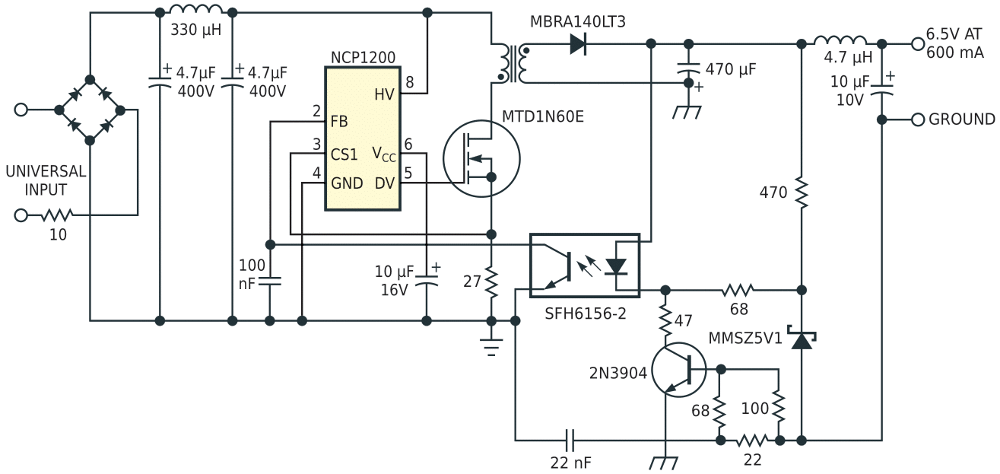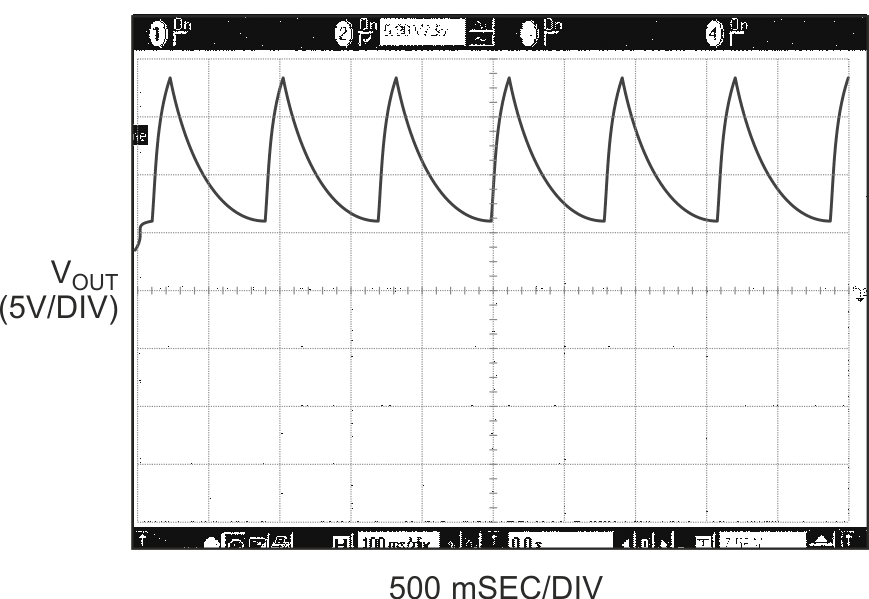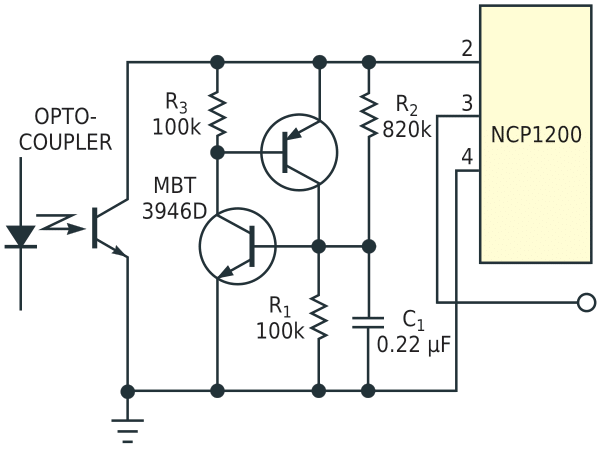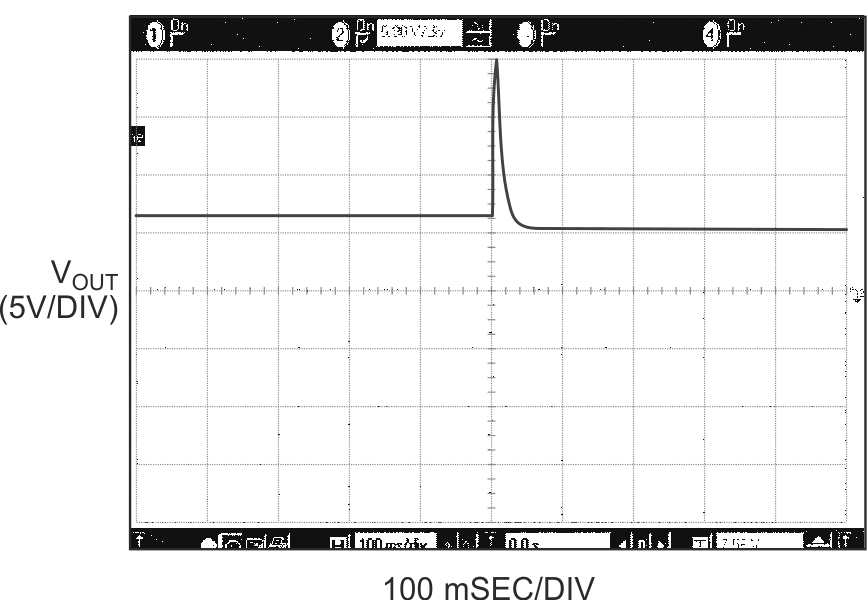A typical SMPS (switch-mode power supply) uses a reference voltage and an optocoupler to regulate the output voltage. The optocoupler carries the isolated information from the secondary side to the primary nonisolated side and ensures proper output regulation. Current-mode architectures obtain the final feedback level by implementing the optocoupler as a variable resistor that internally connects to a pullup element (Figure 1). The voltage on the feedback pin (FB) directly fixes the power supply's peak-current setpoint. When the output power demand is low, VFB and the peak current are low. When the output requires power, VFB increases and authorizes a higher peak current.
 |
|
| Figure 1. | A typical current-mode architecture uses an optocoupler as a variable resistor. |
When an output short circuit is present, the LED optocoupler loses its bias, and the variable-resistor action disappears. The internal 6-kΩ pullup resistor forces VFB to its maximum value, and the power supply delivers its maximum capability to the load. In battery-charger applications, however, short-circuit conditions do not cause optocoupler loss because the output permanently monitors the delivered current and forces the current to be constant (Figure 2a). In this case, the primary implementation is simple because of the lack of the auxiliary winding. If the optocoupler fails to open, the peak-current setpoint increases to its maximum for a given time until the burst-protection feature takes over. This situation repeats until the user switches off the SMPS. The worst case arises in unloaded situations: The output voltage runs away until the burst sequence ends (Figure 2b). As a result, this condition can quickly damage output capacitors if this situation lasts too long.
To avoid this problem, you can use two simple bipolar transistors to latch-off the whole SMPS in the case of an optocoupler failure (Figure 3a). You wire the bipolars in a thyristor manner using a dual-transistor device, such as the MBT3946D.
|
|||||
| Figure 3. | You can use a dual npn+pnp to build a cheap thyristor (a). When the thyristor fires, the pulses permanently stop, leaving no voltage runaway (b). |
||||
In normal operation, R1 through R3 ensure that neither the pnp nor the npn can start conducting. Furthermore, R1 and R2 form a voltage divider that monitors VFB. When VFB increases, the voltage over C1 begins to rise until the npn transistor starts to pull the pnp transistor's base to ground. This action immediately fires the SCR, which locks VFB to nearly zero. When VFB is less than 1.4 V, the NCP1200 IC stops delivering pulses until the SCR resets. You can reset the SCR by unplugging the charger from the main outlet. Figure 3b shows the results of this operation and that the operation is safe with an open optocoupler. When the optocoupler fails, the output voltage grows until the SCR stops the IC operation. VOUT then slowly discharges toward ground. C1 filters out any spurious noise that appears at power-on that could adversely fire the SCR.




